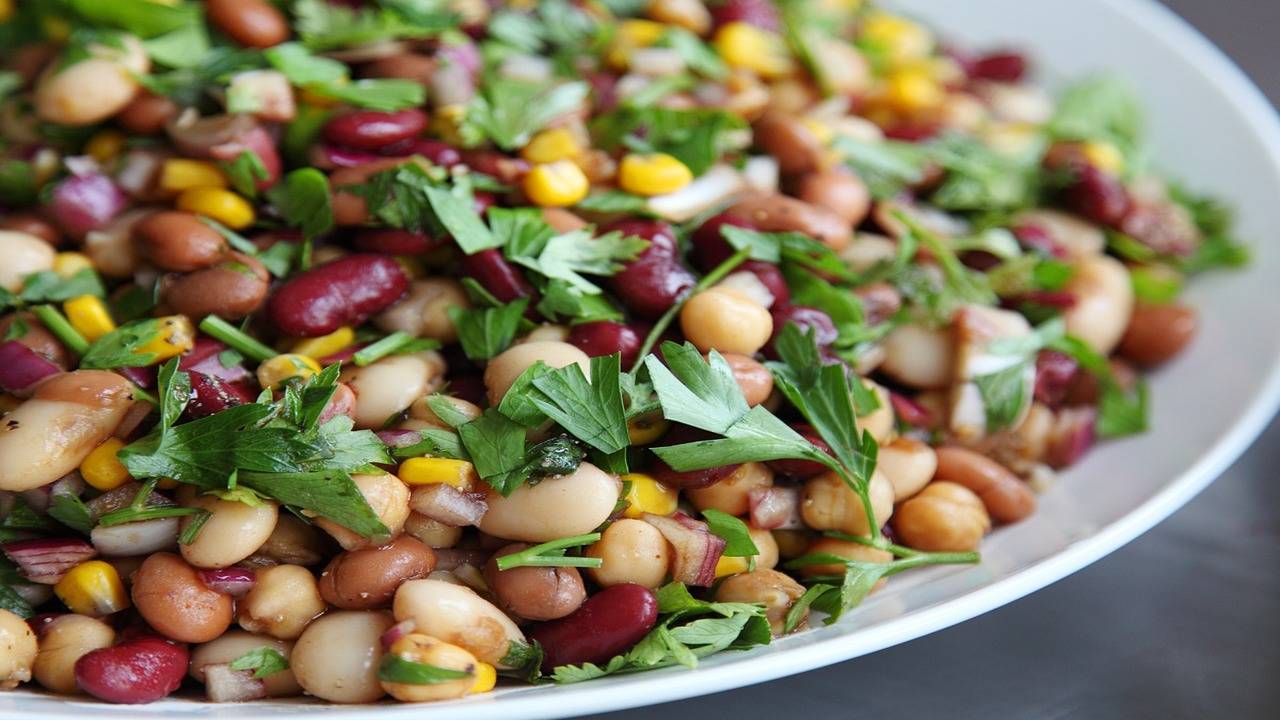When the COVID-19 pandemic hit, people in need of food began to knock on the doors of the Tarrant Area Food Bank’s warehouse in Fort Worth. The Food Bank took the trend as a call for action.
Julie Butner, president and CEO of the Food Bank, remembers seeing people travel from their homes to the Food Bank’s distribution center asking for help. The warehouse isn’t in a neighborhood, but surrounded by commercial buildings.
“I had a very young couple with a new baby come to the front door and they were so scared,” Butner reflected. “They had both lost their jobs. They were so young that they had never experienced job loss, and they had this brand new baby. They didn’t know where to go and where to turn.”
One in six people are affected by food insecurity and one in four children do not have enough food to eat nationally, according to the Food Bank. The pandemic led to many layoffs causing some people to ask for help for the first time.
The organization normally distributes food to over 330 partner agencies across 13 counties that directly serve community members. Mobile markets had been a staple program for the organization before COVID-19. However, the pandemic pushed the Food Bank to put the model to use through a larger-scale.
A weekly drive-through event, called Mega Mobile Markets, was added to immediately provide access to food for thousands of people. The event is held every Friday at Herman Clark Stadium from 9 a.m. to noon in Fort Worth.
It didn’t take long for employees to realize there was an increasing demand for the event. In 2020, over 1 million meals per week were served through the Food Bank’s multiple programs, and the number has been surpassed this year by providing over 1.1 million meals per week.
The Texas Air National Guard was called in to help provide onsite support during the Mega Mobile Market event. Now, employees have an efficient process to prepare and make Mega Mobile Markets run smoothly for those in need.
Many of the organization’s 104 employees understand how food insecurity can impact a person’s life.
Some watched their family members lose their incomes during the pandemic. Others, like Val Aguilar, director of operations, faced food insecurity as a child.
“I was that person in need. My mother was that person when I was growing up,” he said. “It is kind of my way of giving back.”
Addressing the need of food insecurity
According to a 2018-2019 community assessment by the United Way of Tarrant County, the area exceeds rates in Texas and the country for food insecurity.
At least 16% of Tarrant County residents face food insecurity, according to the United Way study. Finances, access to food, social isolation and health concerns can lead to the problem.
Food insecurity can affect anyone, including seniors. Many of the people needing the Food Bank’s help are the working poor, according to Butner.
The organization, which was founded in 1982, strives to be a safety net for those who may face a crisis at any point that leads to food insecurity.
At the beginning of the pandemic, the Food Bank left emergency boxes on its porch for anyone who came looking for help. The boxes contained food and information on partner agencies by ZIP code.
Butner said when hearing about how COVID affected people in San Antonio who faced food insecurity, the organization realized it needed to make its program model bigger. Photos of countless cars awaiting help from the San Antonio Food Bank made national news early in the pandemic. The Food Bank was prepared for 6,000 families but 10,000 came instead, according to KENS5.
The Food Bank originally worked with partner agencies to place mobile markets in parking lots to allow people access to food in their neighborhood.
“The mobile markets we were doing with our partner agencies were getting bigger and bigger,” Butner said. “So then, we finally reached a point where we said ‘OK, we are going to have to find a bigger parking lot and do this on our own.’”
That’s when Mega Mobile Markets were created.
There are three ways for people to qualify to get food at mobile markets and the weekly event at Herman Clark Stadium: if they receive government benefits, experience a crisis or are eligible due to income.
Registration for Mega Mobile Markets is not required. Once a person gets in line for an event, a volunteer will record their information.
Preparing for Mega Mobile Markets
At least 5 million pounds of food is donated each month to the Food Bank from grocery store chains, the United States Department of Agriculture and suppliers like Amazon.
When food arrives at the distribution center, the receiving department sorts the countless boxes, gives donations expiration dates and places them on pallets.
“A lot of grocery chains use the first in/first out model,” Aguilar said. “We do the first in/first expired.”
He said this model is used because the organization never knows what donations may be sent to them. It could be milk with only a week shelf life or a month shelf-life.
Recipes are posted on the organization’s website to give suggestions on what people can make with the food they receive.
The distribution department decides what items will be used for partner agencies, pantries and drive-through events. The transportation office schedules trucks to deliver food.
“I’m very proud of the fact that we only throw away about 1% of the food that hits our doors,” Aguilar said.
Sometimes unorganized donations, like snacks, diapers, baby food and health products, are sent to the organization. Volunteers help sort the donations and then employees place the items onto more manageable pallets for moving.
Before the pandemic, the Food Bank had up to 20,000 volunteers perform over 60,000 hours at its distribution center, gardens, mobile events and with partner agencies in a year.
The center has two coolers and a temperature controlled room to comply with food regulations for grains, produce and dairy products.
On Wednesdays, employees hold meetings to discuss the week’s upcoming drive-through. They finalize plans and write the food orders.
When the Mega Mobile Market at Herman Clark Stadium first started during the pandemic, it was a hit or miss for the amount of people who may attend, according to Lety Fraley, director of operations and compliance.
The organization had to figure out how much food was needed. At some events, 3,000 people came.
Butner said it was a tough decision to ask Gov. Greg Abbott for the National Guard’s help. As a veteran, she knew the gravity of the situation.
“I was so grateful to have their support,” she said. “There was no way we could have done it without them. We just didn’t have the manpower.”
The National Guard helped them learn how to manage the event more efficiently. The organization learned the logistics of operating a drive-through and determined where to place volunteers.
Now, the organization looks to the prior week to understand the possible number of people who may attend, according to Fraley.
“It’s very rewarding to know that you can help,” Fraley said. “You see it firsthand.”
Family members of Fraley experienced job loss during the pandemic.
“If you ask anybody here why they are here, they will always say ‘the mission,’” Aguilar said. “We are here to help people.”
Continuing to serve the community
Butner remembers a young child came to the Food Bank at the beginning of COVID with a sandwich bag filled with change. Her parents were waiting in the car. The child wanted to make a donation.
“If you don’t have the support of the community, you can’t get the work done,” Butner said.
Even as the vaccination rate continues to rise and businesses reopen, the Food Bank sees a need for the weekly event. COVID-19 brought clarity on how the Food Bank was serving the county’s rural and metropolitan communities. Before the pandemic, some people living in these areas were only receiving at least one meal a week.
The demand is still 40% higher than it was before COVID, according to Butner. She said the Food Bank is considering continuing elements of Mega Mobile Markets after the pandemic is over.
The Food Bank has hired hospitality workers who were furloughed by other companies. More vehicles and equipment were purchased to help operations.
The organization is in the process of funding and creating a satellite facility in Parker County.
Putting food into people’s hands is not the only focus of the food bank.
It has a variety of programming to help people get out of the situations that led them to food insecurity. The agency services department helps people enroll in government programs. The organization also has programming to teach children and adults about healthy food choices and cooking.
Visit the Tarrant Area Food Bank’s website (tafb.org) for information on volunteering, donating or becoming a partner






